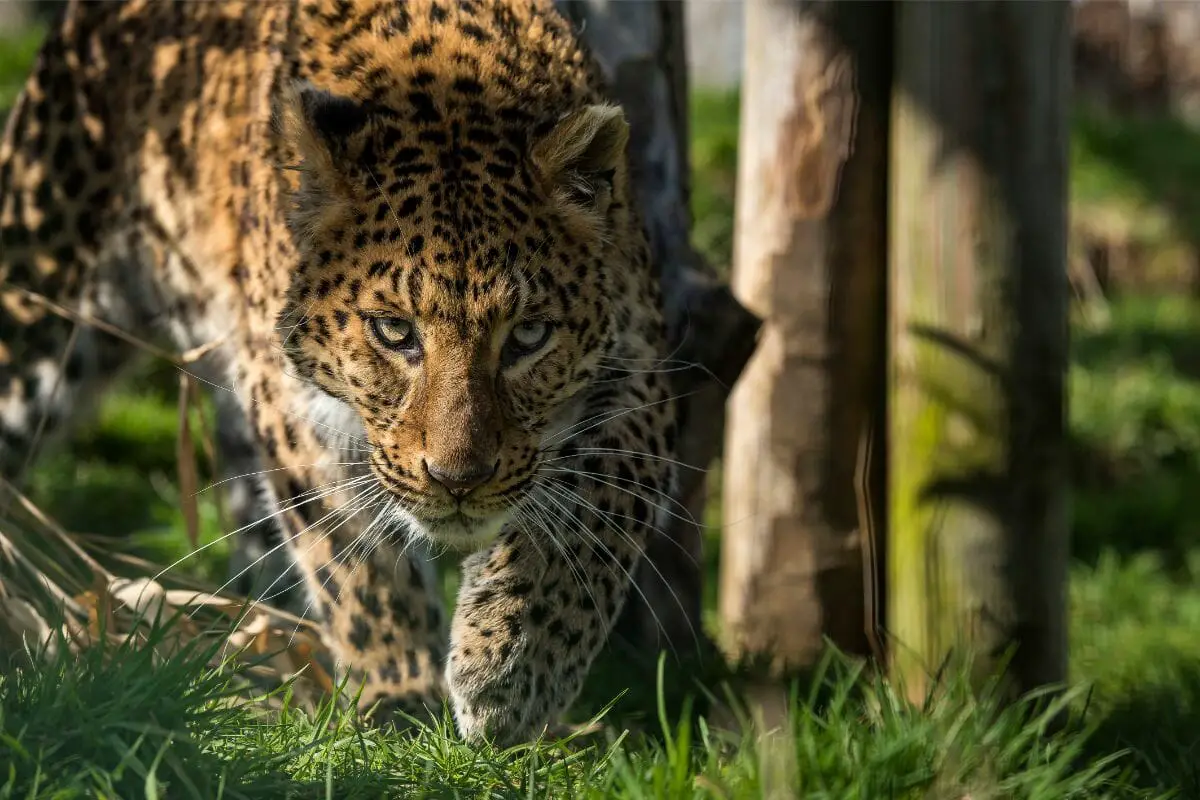The leopard is one of the five extant species in the genus Panthera, but you might know them more colloquially as ‘big cats’, but they are actually the smallest of this family.

You can find them across different parts of Asia and in sub-Saharan Africa.
These solitary animals are so famous amongst humans because there’s so many different types of them and they’re outstandingly strong.
Unfortunately leopards are considered ‘endangered’ in Asia and northern Africa due to habitat loss and human persecution, sadly their beautiful patterns on their fur is often sought after by humans.
But there are so many different types of leopards out there, and leopards are efficient predators with their well-camouflaged fur and a broad prey base, which means they’re not going anywhere just yet.
We’re going to discuss the 9 recognized subspecies of leopard and their different characteristics.
Amur Leopard
This is sadly a critically endangered subspecies of leopard. In 2021, it was reported that there were about 110 individual leopards alive.
If you’re ever lucky enough to spot one of these beautiful creatures, it’ll be in southeastern Russia and northeastern China, as that’s where they’re native to.
These leopards differ from others by their thick, pale cream-colored fur that enables them to thrive in the winter climate in which they live.
The populations of Amur leopard are threatened by human settlement, disease, poaching and construction of roads in their habitat.
North Chinese Leopard
These leopards are native to China (Also check out Animals Native To China), but they are the most geographically widespread of all the cats.
They’re of a similar size to the Amur leopard, but the coat of a North Chinese leopard is much darker and more orangish.
Poaching, deforestation and the illegal trade of leopard skins are a few of the reasons why these leopard populations are declining.
Sri Lankan Leopard
You can probably tell by the name that this subspecies of leopard is native to Sri Lanka.
They’re listed as vulnerable on the IUCN red list and their population is estimated to be less than 800 mature individuals.
This leopard has a rusty yellow or tawny coat with close-set rosettes and dark spots.
The Sri Lankan leopard is quite a big species, the females average a weight of 29kg and have a head-to-body length of 3ft 5in, the males average a weight of 56kg with a head-to-body length of 4ft 2 in.

This subspecies has apparently evolved to become so large because it is an apex predator that has no other large wild cat competition in its respective country.
Indochinese Leopard
This leopard subspecies is native to mainland southeast Asia and southern China.
Their fur is a rusty-red color that is paler at the sides, with small rosettes that are quite closely set with one another.
These gorgeous leopards are primarily threatened by habitat destruction and prey depletion through illegal hunting.
The lack of tigers has led to the use of leopard body parts for traditional chinese medicines, this has also severely affected the Indochinese leopard population.
Javan Leopard
You’ll find the Javan leopard on the Indonesian island of Java, it’s another endangered subspecies of leopard and their population is estimated at 188-571 mature individuals.
These leopards can sometimes be entirely black due to a recessive phenotype, or they can have the usual spotted fur.
The Javan leopard is threatened by habitat destruction, depletion of prey and poaching due to human population growth and agricultural expansion.
Arabian Leopard
This subspecies of leopard is native to the Arabian Peninsula, it’s a critically endangered subspecies because of habitat loss, degradation and fragmentation.
Many shepherds and villagers will kill leopards in retaliation for attacks on livestock, the population of the Arabian leopard is also shrinking because of the decrease of natural prey species.
The Arabian leopard stands out with its fur, it varies from pale yellow to deep golden, tawny or gray.
Females weigh around 20kg whilst males weigh around 30kg and it is the biggest cat in the Arabian Peninsula.

Persian Leopard
The Persian leopard is the biggest subspecies of leopard, and can be found in the Caucasus region where its range encompasses Iran, Turkmenistan, Azerbaijan and western Afghanistan.
This subspecies of leopard is considered endangered and the wild population is estimated at less than 1,000 mature individuals.
They are threatened by poaching, depletion of their prey base due to poaching, human disturbance and habitat loss.
They are distinguishable to the other subspecies by their fur which is a slightly reddish color with large rosettes on its flank and back, with smaller ones on its shoulder, upper legs and spots on its head and neck.
It can weigh up to around 60kg but biometric data collected in various provinces of Iran found a young male from northern Iran weighed 64kg.
Indian Leopard
The Indian leopard is widely distributed on the Indian subcontinent, it’s listed as vulnerable on the IUCN’s red list as populations have declined because of habitat loss and poaching for the illegal trade of body parts and skin.
A 2014 survey estimated that there was a national total of 12,000-14,000 individuals.
Their fur has a pale yellowish to yellowish brown background with rosettes most common on the flank, back and hindquarters.
Male Indian leopards can grow to 4ft 8in in body size and weigh up to 77kg, whilst females can grow up to 3ft 10in in body size and weigh up to 34kg.
African Leopard
This subspecies of leopard is native to the African continent. They’re widely distributed in most of sub-Saharan Africa, but their range has been heavily fragmented in the course of habitat conversion.
Their coat varies from pale yellow or tawny to black to deep gold and they are patterned with black rosettes.
African leopards are usually the victims of trophy hunting which is severely depleting the population and leopard populations that live near human settlements have significantly dropped due to the hunting of these animals for their meat.








